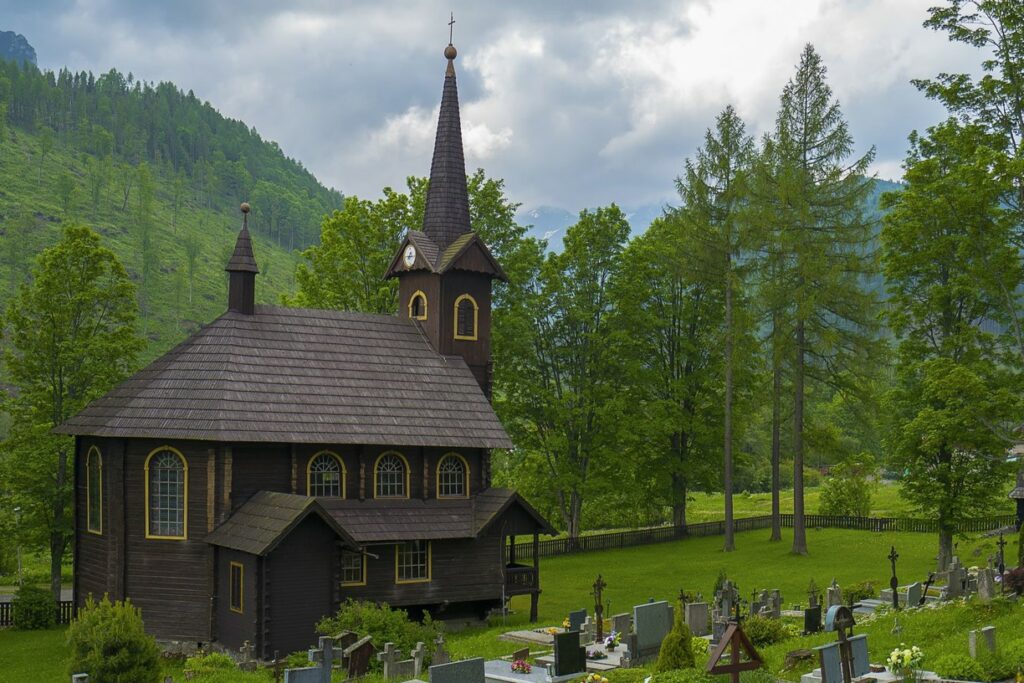In the heart of the Tatras National Park, surrounded by the imposing Belianske Tatras, is the wooden Church of St. Anne. This sacred building is not only a place of religious worship, but also an architectural jewel that will enchant anyone who ventures here.
The history of the church dates back to 1880, when it was built by Prince Christian Kraft Hohenlohe. The church is hidden on the outskirts of the picturesque village of Tatranská Javorina. Prince Hohenlohe decided to dedicate the church to St. Anne, the patron saint of forestry.
Prince Hohenlohe was a wealthy nobleman with an estate of 15 thousand hectares of land in various parts of Europe, including the Tatra Mountains. He owned the area of Tatranská Javorina and the Belianske Tatras, where the Church of St. Anne is located. He used his property for hunting and took care of the running of his lands. He managed to keep these areas almost untouched at a time when tourism was gaining popularity.
Tatranská Javorina itself was the centre of his property and business. He built a bakery, a hunting lodge and operated a plywood factory. In this way he employed many people in the area and contributed to the development of the local community.
Originally he did not allow tourists access to his territory, but later he joined the Hungarian Carpathian Association and set certain routes and dates of visitation. Despite his interest in hunting, his territory became one of the best preserved areas within the Tatra National Park.
Prince Hohenlohe had St. Anne’s Church built in 1903 and consecrated by the Catholic vicar of the Spiš Kapitula. The church is surrounded by beautiful nature, offering a breathtaking view of the Belianske Tatras. Its wooden interior is extremely impressive, especially with the sunlight streaming in through the coloured glass of the windows. The coat of arms of the Hohenlohe family, in honour of the prince, is placed on the church’s place of honour.
The cemetery next to the church is also remarkable, with a distinctive tombstone. Eduard Kégel, the administrator of Tatranská Javorina, who died in 1911, is buried there. Prince Hohenlohe had this tomb built for him as a token of gratitude and respect. In addition to him, the prince himself and his wife Otýlia Lubraniec-Dambská are also in this grave. Kegel’s tomb is also the resting place for the famous painter of the Tatra Mountains, Jaroslav Votrub.
The Church of St. Anne, together with the cemetery, the wooden mortuary, the tomb of the Kégel family and the monuments of Prince Hohenlohe and J. Votruba, are national cultural monuments that refer to the historical heritage and beauty of Tatranská Javorina.
The Church of St. Anne in Tatranská Javorina is a real treasure of the Tatra National Park and a symbol of the combination of religious faith and natural wealth. Its architecture and historical significance offer visitors a very unique experience.
